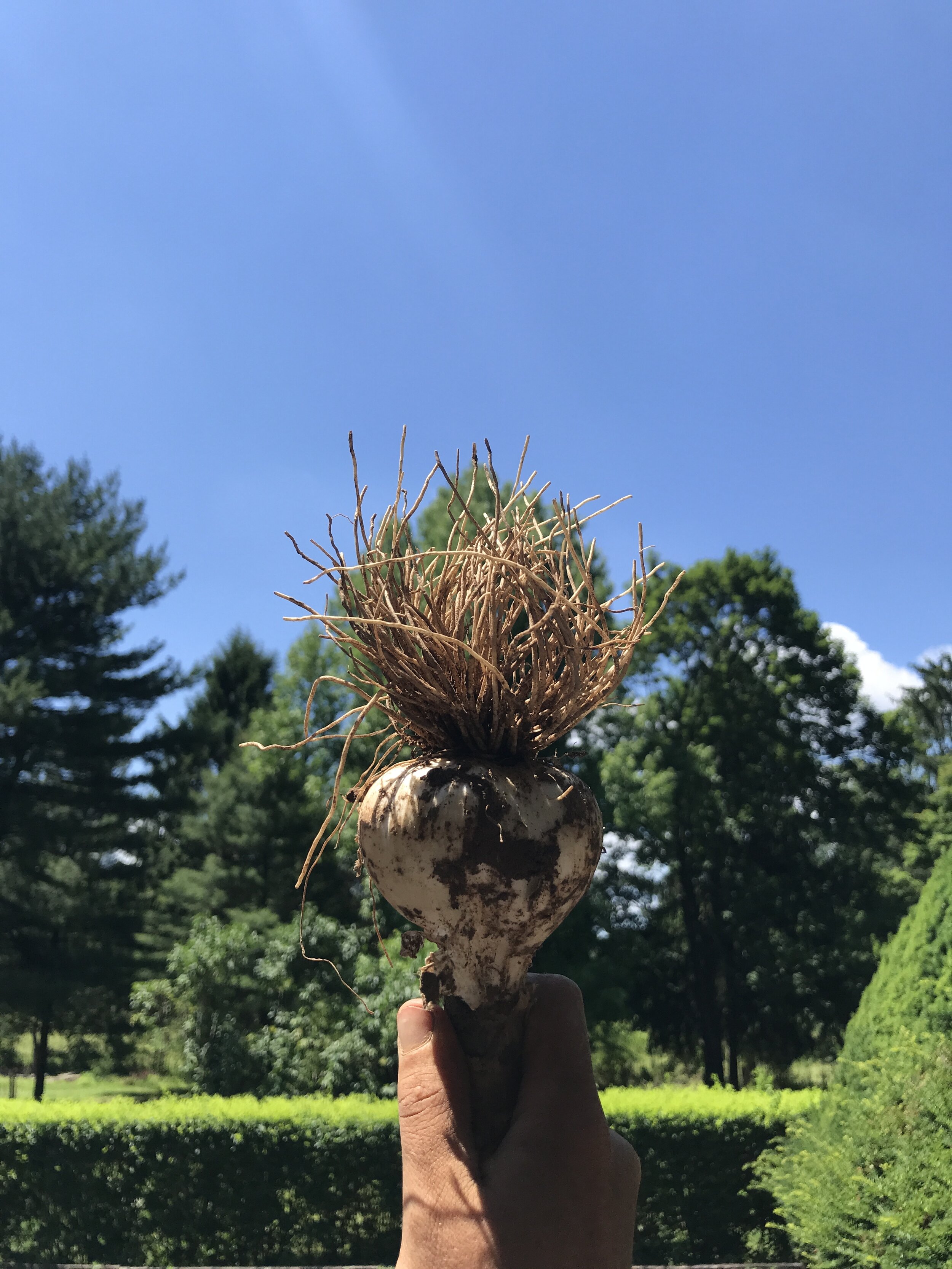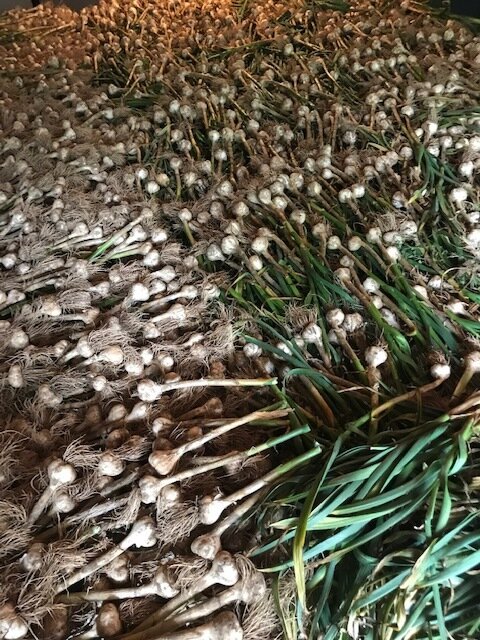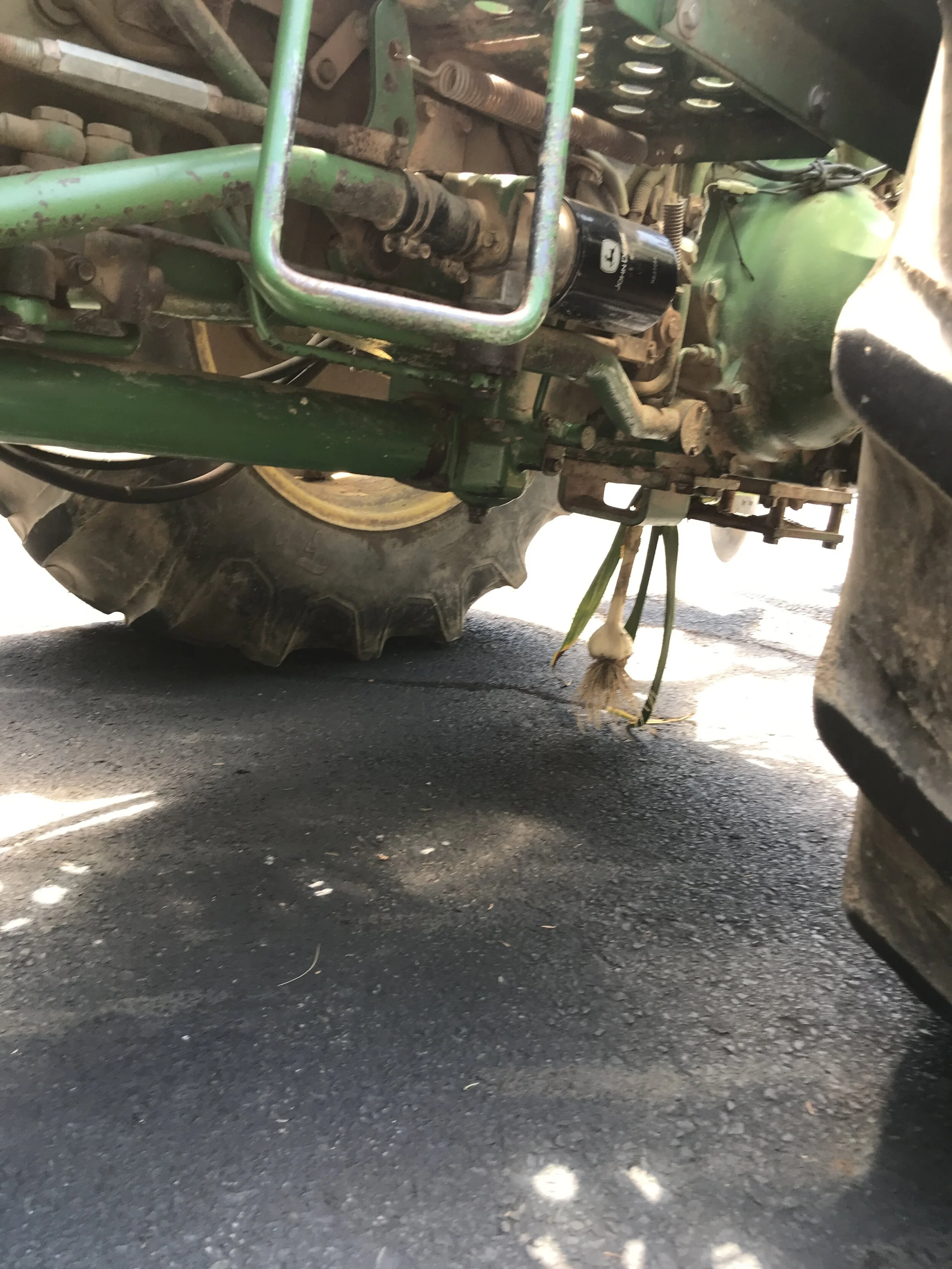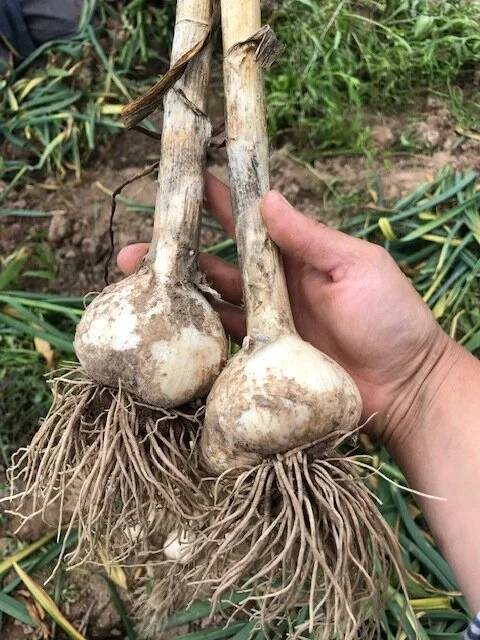PIckup #5
This week we harvested garlic! I know I write about it every year but it is a momentous event every season. A crop that we plant the year before to be harvested in circumstances we don’t yet know about. Last November, we could never have predicted the world we would be living in now as we harvest the garlic. How lucky we are to be here, still farming, to collect the bounty we prepared for many months ago.
The thing about harvesting garlic is that the pulling the bulbs out of the ground isn’t the hard part - it’s finding a place to put them to cure is the real challenge. With most of our crops, we have them in the fields, until they are ready to harvest and then we distribute them immediately. But crops like garlic, onions and winter squash that need to be cured or stored long term are a challenge. They take up space for weeks sitting, drying, having their starches turn to sugars so they last longer. The conditions have to be right for this to work well and without big barns or storage facilities this is a logistical problem for many small farms. Years ago I worked on a farm in the Poconoes, we would dry onions and garlic in a barn that was the home to 2 old donkeys and required traversing a swamp to get there. We would balance crates on our shoulders as we deftly navigated planks across the mud only to be confronted by unsocialized donkeys many times chasing us out of the barn. One year we cured squash in an empty bedroom of the farm house. The last few years we hung garlic in the loft of a barn using an ancient pulley system to lift the bundles to the top floor. This year, we have borrowed a garage and set up fans to dry the garlic down requiring us to ferry the bulbs down the road on the tractor. Improvisation is key to farming and usually it works out, but it’s never not ridiculous.
In the share this week:
garlic scapes (bunch)
garlic (1 bulb)
head lettuce (green and red)
salad mix (bag)
curly kale (bunch)
tuscan kale (bunch)
hakurei turnip (bunch)
escarole (1 head) limit 1
bok choy (1 head or 2 small)
arugula (bag) limit 1
spicy greens (bag)
kohlrabi (3 bulbs )
swiss chard (bunch) limit 1
fennel (2 bulbs)
radicchio (1 head)
beets (bunch) limit 1
zucchini (2) limit 1
squash blossoms (5 blossoms)
spring onion (1 bunch)
sugar snap peas (1 pint) limit 1
Green Cabbage (1 head ) limit 1
Roasted Balsamic Radicchio
BON APPÉTIT MAY 2005
YIELDMakes 4 servings
INGREDIENTS
2 large heads of radicchio (about 1 pound total), halved through core end, each half cut into 3 wedges with some core still attached
3 tablespoons olive oil
1 tablespoon chopped fresh thyme
Balsamic vinegar (for drizzling)
PREPARATION
Preheat oven to 450°F. Rinse radicchio wedges in cold water; gently shake off excess water (do not dry completely). Place radicchio in large bowl. Drizzle with olive oil and sprinkle with thyme, salt, and pepper; toss to coat.
Arrange radicchio wedges, 1 cut side up, on rimmed baking sheet. Roast until wilted, about 12 minutes. Turn over and roast until tender, about 8 minutes longer.
Arrange radicchio on platter, drizzle with balsamic vinegar, and serve.
Market Tip
Radicchio (red-leaf Italian chicory) is available in many varieties. The most widely distributed in this country are the round head variety (di Castelfranco or di Chioggia), traditionally used in salads, and the long, flat, finger-shaped radicchio di Treviso, which is excellent grilled.




